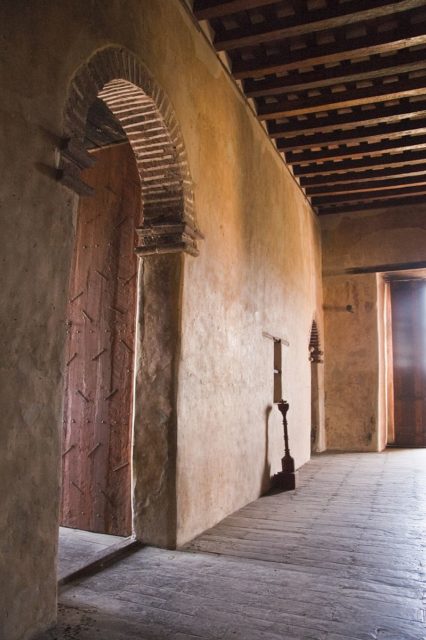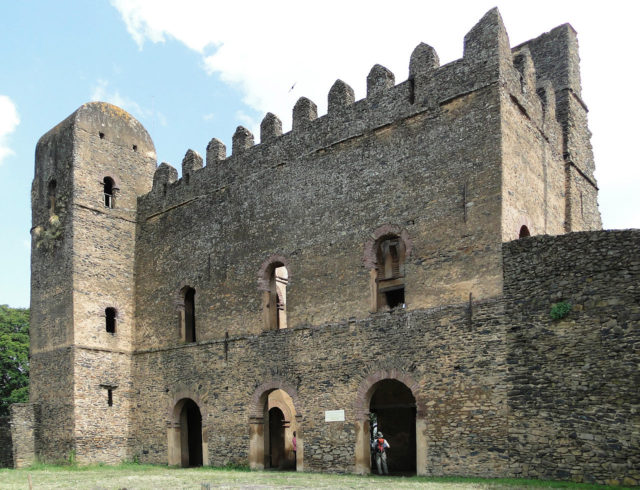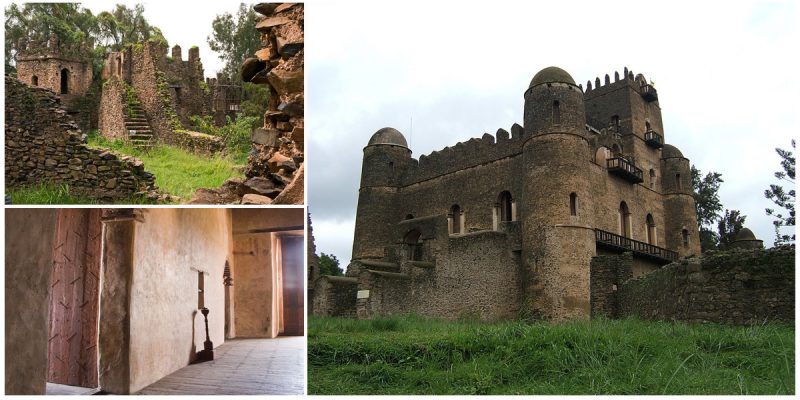Fasil Ghebbi or Royal Enclosure was a fortress-city within Gondar, Ethiopia which was founded in the 16th and 17th century as the residence of the Ethiopian emperor Fasilides and his successors. Each of the successors brought something new into the appearance of the Royal Enclosure.
Many palaces and temples were erected on the site, and some of them survived to the present day. The architecture of the castle complex is unique and shows diverse influences, including Nubian style.


The fortress-city was surrounded by a 900 meters long wall and contains various buildings. It includes a banqueting hall, Fasilides’ Castle, Dawit III’s Hall, Iyasu I’s palace, a chancellery, Empress Mentewab’s Castle, a library and three churches.
The main castle of the site is the Fasilides Castle which was built by the orders of the emperor in the period when he founded the city of Gondar as his capital, somewhere in the 1640s. The castle resembles European medieval castles because of its massive towers and looming battlemented walls. It was a novelty in traditional architecture of Ethiopia because of its two floors.



There are many legends about the city, and according to Castles Today, one of them is that the city was built in a place pointed out to the Emperor Fasilides by a buffalo, which led him to the picturesque foothills during a hunt. It is said that Gondar was destined to become the historical and cultural center of the country.
The city covers a vast area of about 70, 000 square meters. On the south side lies the marketplace of Gondar, known as Adababay, and on the northern part of the enclosure is the Dawit’s Hall, which is often referred as the “House of the Song”. It is a building with one long hall, and from 2002 it stands without a roof. There are twelve gates on the surrounding wall of Fasil Ghebbi. Each one of them has a name and its significant meaning.


The Royal Enclosure survived a lot of damages during the centuries, and some of the castles were destroyed because of earthquakes and bombardments of several wars including the WWII.
The site was inscribed as a UNESCO World Heritage Site in 1979, and today is under the management of the AARCH and the Regional and Zonal Culture, Tourism and Information Bureaus. After several restorations in the 20th century, Fasil Ghebbi was opened to the public in 2005 and is known as one of the most remarkable attractions of Ethiopia.
